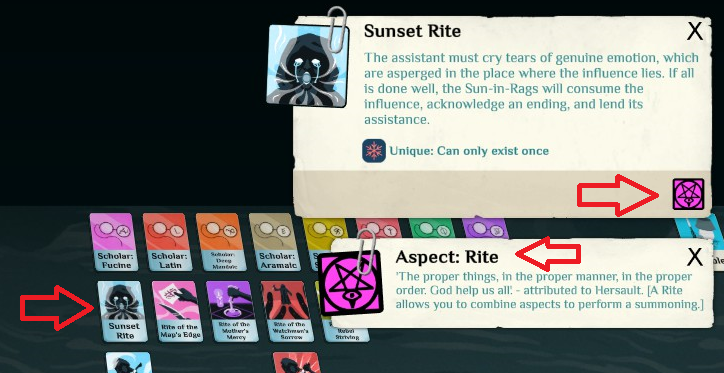The learning curve of this game is somewhat long since you have to keep trying to make something "work". Understand Aspects is part of the process and it was challenging, so don't fell frustrated. Here is a way to understand it from this tutorial:
All of these little cards has different Aspects, which are used to describe the characteristics of the object.
So, for instance, let's say a card is a Rite. You will see the following:

The Sunset Rite card has the Rite Aspect. It should be used on places where Rite are allowed. If I'm not mistaken, you should use Rite cards only in the WORK verb. Here is an example:

In the above example, the RITE requests a INSTRUMENT (the pink dagger icon). The Wildering Mirror has that Aspect. So, I can use it in that Ritual.
But a card can also have an aspect with a level aggregated to it. For instance, the next card has a level 10 Edge Aspect characteristic associated with it:

For some Rites you will need cards with different Aspect levels. To summon a Voiceless Dead, you will need Knock level 2 + Winter level 4 + Heart level 2.
On the screenshot you posted, you are painting with Forge level 3, Lantern level 3, Grail level 3 and Moth level 2 (plus some other aspects).
To make things more clear on each characteristic of the game, I would highly recommend reading
- this first guide that is kind of a overview tutorial
- this second guide very useful to describe challenges and requirements
- this useful wiki for extended support
